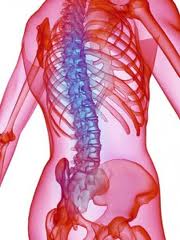 Female physician researchers make less money than their male counterparts, researchers found. Among recipients of National Institutes of Health (NIH) career development awards, the average reported annual salary was $167,669 for women and $200,433 for men, according to Reshma Jagsi, MD, DPhil, of the University of Michigan in Ann Arbor, and colleagues.
Female physician researchers make less money than their male counterparts, researchers found. Among recipients of National Institutes of Health (NIH) career development awards, the average reported annual salary was $167,669 for women and $200,433 for men, according to Reshma Jagsi, MD, DPhil, of the University of Michigan in Ann Arbor, and colleagues.
Even after adjustment for differences in specialty, academic rank, leadership positions, publications, and research time, there remained an absolute difference of $13,399 per year between the sexes, the researchers reported in the June 13 issue of the Journal of the American Medical Association.
The study, which is consistent with a previous study of life sciences researchers, "provides evidence that gender differences in compensation continue to exist in academic medicine, even among a select cohort of physician researchers whose job content is far more similar than in cohorts previously studied, and even after controlling extensively for specialization and productivity," they wrote.
"Efforts to investigate the mechanisms by which these gender differences develop and ways to mitigate their effects merit continued attention, as these differences have not been eliminated through the passage of time alone and are difficult to justify."
In 2009 and 2010, Jagsi and colleagues mailed surveys to all 1,729 recipients of NIH K08 and K23 career development awards issued from 2000 through 2003 who were alive and had an identifiable mailing address. The response rate was 71%.
Men were more likely than women to be married, have children, and hold administrative leadership positions. The male researchers also had a higher average number of publications and work hours.
Women were more likely to be in the lowest-paying specialties (those paying less than $175,000 per year) and less likely to be in the highest-paying specialties (more than $300,000 per year).
Accounting for those differences did not entirely eliminate the pay disparity between the sexes, which, if extrapolated over a 30-year career, would result in a shortfall of more than $350,000 for women.
All other factors remaining equal, the female researchers in the study would be expected to make $12,194 more per year if they were male. "This unexplained disparity accounted for 37.4% of the total observed difference by gender," the authors wrote.
They speculated about some of the reasons women are paid less than men, including the possible influence of parental status. Even women without children in the current study, however, were shortchanged.
It is also possible, the authors wrote, there are differences in values between men and women. Perhaps men place a greater value on pay and women place more emphasis on living in a more desirable area, even if it means taking a smaller salary, they suggested.
But the disparity could be explained, at least partly, by gender bias and discrimination, according to the authors.
Recently the Institute for Women's Health Research at Northwestern hosted Dr. Molly Carnes from the U of Wisconsin to speak on this topic and many of her research finding also suggest gender bias. To read the synopsis of that lecture, click HERE and go to the May 15 lecture notes.
Source reference:
Jagsi R, et al "Gender differences in the salaries of physician researchers" JAMA 2012; 307: 2410-2417.

 A hike in your blood pressure during middle age significantly raises the risk of having a heart attack or a stroke during your lifetime, according to new Northwestern Medicine research. The study offers a new understanding on the importance of maintaining low blood pressure early in middle age to prevent heart disease later in life.
A hike in your blood pressure during middle age significantly raises the risk of having a heart attack or a stroke during your lifetime, according to new Northwestern Medicine research. The study offers a new understanding on the importance of maintaining low blood pressure early in middle age to prevent heart disease later in life. The esophageal cancer risk with bisphosphonate bone drugs may be a bigger problem than thought, particularly with use of alendronate (Fosamax), an adverse event surveillance study suggested. Overall, 128 cases of bisphosphonate-associated esophageal cancer were reported to the FDA's adverse event reporting system (AERS) from 1995 through 2010, Beatrice J. Edwards, MD, of Northwestern University and colleagues found.
The esophageal cancer risk with bisphosphonate bone drugs may be a bigger problem than thought, particularly with use of alendronate (Fosamax), an adverse event surveillance study suggested. Overall, 128 cases of bisphosphonate-associated esophageal cancer were reported to the FDA's adverse event reporting system (AERS) from 1995 through 2010, Beatrice J. Edwards, MD, of Northwestern University and colleagues found. My daughter teaches dance to preschool children and recently I went to observe one of her classes. I was really surprised to see that some of the children could not follow a simple dance movement pattern and could not jump on one foot. Their inability to concentrate and follow directions was also concerning though I certainly am not a child development expert. On the other hand, preschoolers can work complicated electronic equipment and iphones. I found this article that further explores and addresses my concerns and ask for comments from our readers on their observations.
My daughter teaches dance to preschool children and recently I went to observe one of her classes. I was really surprised to see that some of the children could not follow a simple dance movement pattern and could not jump on one foot. Their inability to concentrate and follow directions was also concerning though I certainly am not a child development expert. On the other hand, preschoolers can work complicated electronic equipment and iphones. I found this article that further explores and addresses my concerns and ask for comments from our readers on their observations. Brooding in your apartment on Saturday afternoon? A new smart phone intuits when you’re depressed and will nudge you to call or go out with friends.
Brooding in your apartment on Saturday afternoon? A new smart phone intuits when you’re depressed and will nudge you to call or go out with friends. Simply ejecting your rear from the couch means your hand will spend less time digging into a bag of chocolate chip cookies.
Simply ejecting your rear from the couch means your hand will spend less time digging into a bag of chocolate chip cookies. Interesting research on the outcomes of "The Biggest Loser" reality TV show highlight important news for diabetics! According to Robert Huizenga, MD , the medical advisor for the show, diabetic and prediabetic contestants were off medications within a few weeks of starting the intensive exercise regimen that are part of the intervention. The contestants who were part of the study, averaged about 5-6 hours of TV watching a day and they were exercising about 120 minutes per week BEFORE they went on the show. The exercise regimen while on the show comprised about 4 hours of daily exercise that included intense aerobics and resistance training for 2 hours and another 2 hours of moderate aerobics.
Interesting research on the outcomes of "The Biggest Loser" reality TV show highlight important news for diabetics! According to Robert Huizenga, MD , the medical advisor for the show, diabetic and prediabetic contestants were off medications within a few weeks of starting the intensive exercise regimen that are part of the intervention. The contestants who were part of the study, averaged about 5-6 hours of TV watching a day and they were exercising about 120 minutes per week BEFORE they went on the show. The exercise regimen while on the show comprised about 4 hours of daily exercise that included intense aerobics and resistance training for 2 hours and another 2 hours of moderate aerobics. With women’s reproductive health reemerging as a heated issue this year in policy debates and news reports, this month’s Kaiser Health Tracking Poll assesses women’s perceptions and reactions to that attention and its potential impact on the upcoming presidential election.
With women’s reproductive health reemerging as a heated issue this year in policy debates and news reports, this month’s Kaiser Health Tracking Poll assesses women’s perceptions and reactions to that attention and its potential impact on the upcoming presidential election. A new study shows that the biological clock is not the only clock women trying to conceive should consider. The
A new study shows that the biological clock is not the only clock women trying to conceive should consider. The  People with spider phobia handle tarantulas and have lasting changes in fear response! A single brief therapy session for adults with a lifelong debilitating spider phobia resulted in lasting changes to the brain’s response to fear. The therapy was so successful the adults were able to touch or hold a tarantula in their bare hands six months after the treatment, reports a new Northwestern Medicine study.
People with spider phobia handle tarantulas and have lasting changes in fear response! A single brief therapy session for adults with a lifelong debilitating spider phobia resulted in lasting changes to the brain’s response to fear. The therapy was so successful the adults were able to touch or hold a tarantula in their bare hands six months after the treatment, reports a new Northwestern Medicine study.